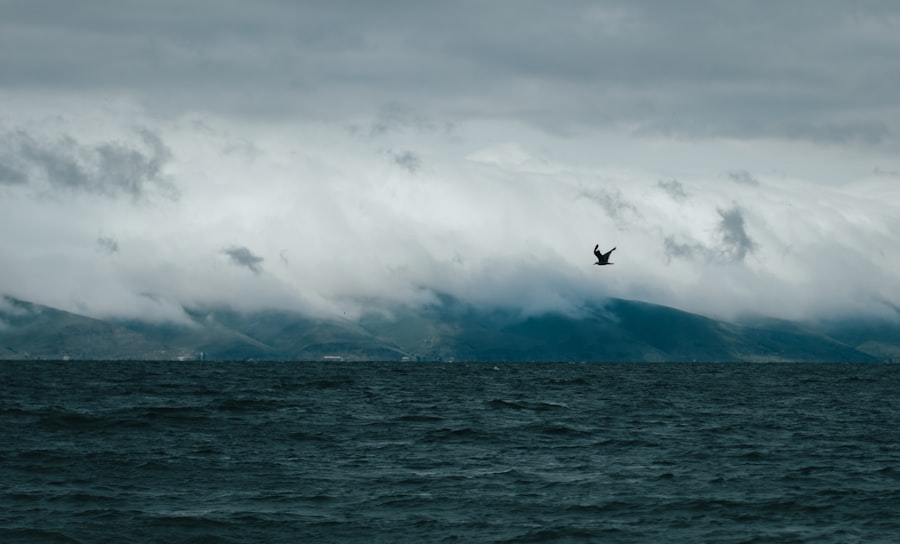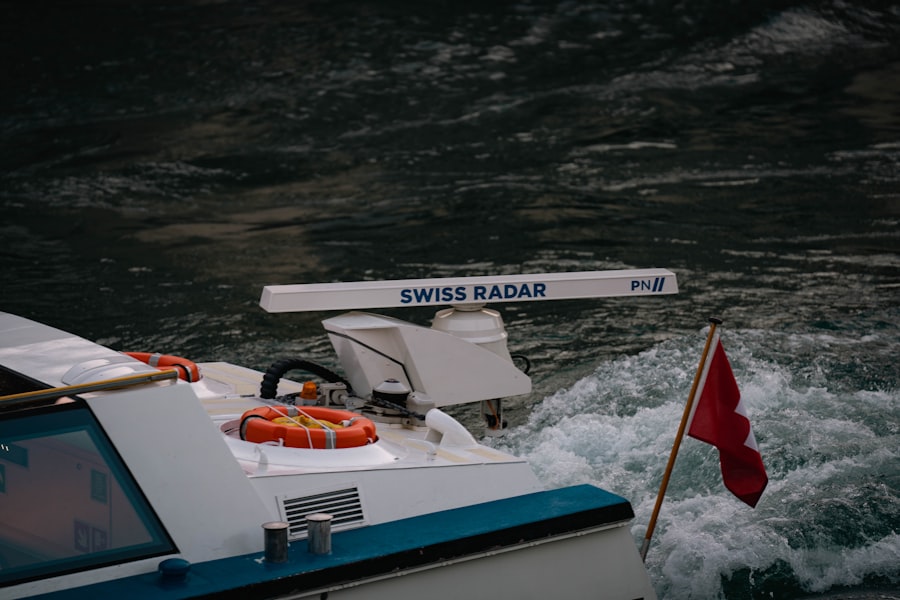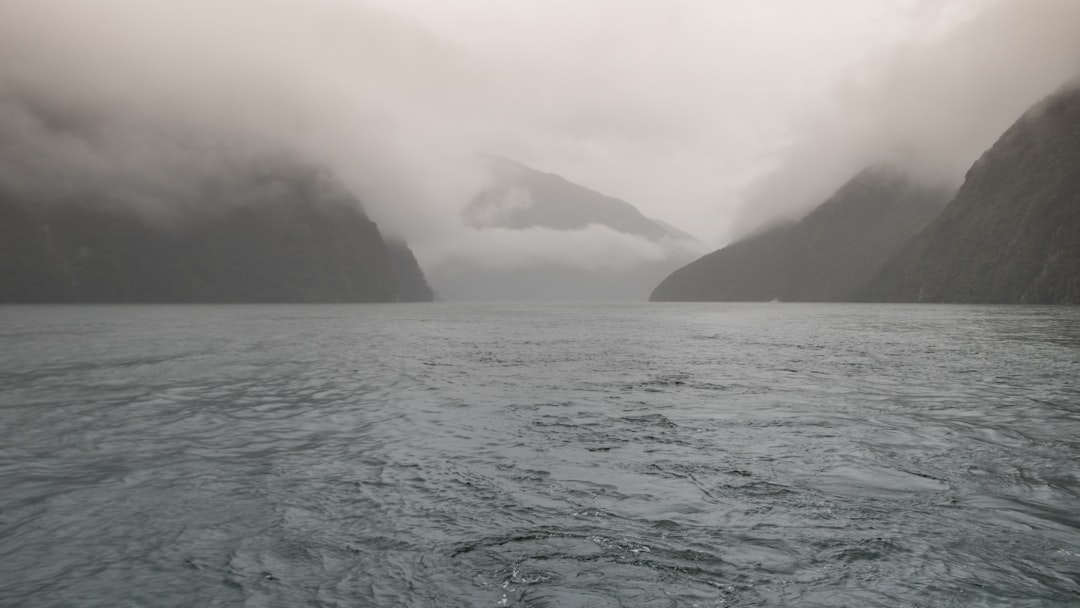The Drake Passage, a body of water that separates South America from Antarctica, is renowned for its tumultuous seas and unpredictable weather. Named after the English explorer Sir Francis Drake, who navigated these waters in the late 16th century, the passage has become a focal point for adventurers, scientists, and maritime enthusiasts alike. It serves as a critical route for vessels traveling between the Atlantic and Pacific Oceans, making it a significant area for both commercial and research purposes.
The passage is not merely a geographical feature; it embodies the spirit of exploration and the challenges that come with venturing into the unknown. As one of the most notorious maritime routes in the world, the Drake Passage has captured the imagination of many. Its reputation for fierce storms and high waves has led to a mix of fear and fascination among sailors.
The passage is often described as a rite of passage for those seeking to explore the Antarctic region, where the allure of pristine landscapes and unique wildlife awaits. However, it is essential to understand that this journey is not without its risks, and those who dare to traverse these waters must be well-prepared for the challenges that lie ahead.
Key Takeaways
- The Drake Passage is a treacherous body of water located between the southern tip of South America and the northern tip of Antarctica.
- The geography and climate of the Drake Passage are characterized by strong winds, rough seas, and unpredictable weather patterns, making it one of the most challenging maritime routes in the world.
- The historical significance of the Drake Passage is marked by the expeditions of famous explorers such as Sir Francis Drake and the early navigators who sought to find a sea route between the Atlantic and Pacific Oceans.
- Navigating the Drake Passage poses numerous challenges and dangers, including extreme weather conditions, icebergs, and strong currents that can test the skills of even the most experienced sailors.
- Strategies for navigating the Drake Passage safely include careful route planning, staying updated on weather forecasts, and ensuring that vessels are well-equipped to handle the harsh conditions of the passage.
Understanding the geography and climate of the Drake Passage
The Drake Passage spans approximately 600 kilometers (about 370 miles) at its narrowest point, connecting the southern tip of South America to the Antarctic Peninsula. This strategic location plays a crucial role in global ocean currents, particularly the Antarctic Circumpolar Current, which flows unimpeded around Antarctica. The geography of the passage is characterized by deep waters, with depths reaching over 4,000 meters (13,000 feet) in some areas.
This depth contributes to the unique marine ecosystem found within the passage, making it a vital area for scientific research. The climate of the Drake Passage is notoriously volatile, influenced by its position between two major oceanic systems. The region experiences strong winds and rapidly changing weather patterns, often leading to rough seas.
Temperatures can vary significantly, with cold Antarctic air colliding with warmer air from the north. This climatic instability creates an environment where storms can develop quickly, posing challenges for vessels navigating through the passage. Understanding these geographical and climatic factors is essential for anyone planning to cross this formidable stretch of water.
Historical significance of the Drake Passage

The historical significance of the Drake Passage cannot be overstated. It has long been a critical route for explorers and traders seeking to connect the Atlantic and Pacific Oceans. Sir Francis Drake’s circumnavigation of the globe in the late 1500s marked one of the first recorded passages through these treacherous waters.
His journey not only demonstrated the navigational skills of his time but also opened up new possibilities for trade and exploration in the New World. Throughout history, the Drake Passage has been a site of numerous expeditions, each contributing to our understanding of geography and navigation. The passage became increasingly important during the Age of Exploration when European powers sought new trade routes and territories.
It served as a gateway for whalers, sealers, and later, scientists studying Antarctica’s unique environment. The legacy of these voyages continues to influence modern exploration and research in the region.
Challenges and dangers of navigating the Drake Passage
| Challenges and Dangers of Navigating the Drake Passage |
|---|
| Rough seas and strong winds |
| Potential for icebergs and ice floes |
| Narrow and unpredictable navigational route |
| Isolation and limited access to assistance |
| Extreme weather conditions |
| Potential for seasickness and motion discomfort |
Navigating the Drake Passage presents numerous challenges that can test even the most experienced mariners. The unpredictable weather patterns can lead to sudden storms, with waves reaching heights of up to 15 meters (50 feet) or more. These conditions can create hazardous situations for vessels, making it imperative for sailors to remain vigilant and prepared for rapid changes in their environment.
The combination of strong currents and shifting winds can also complicate navigation, requiring skilled seamanship and an understanding of local conditions. In addition to natural hazards, there are logistical challenges associated with crossing the Drake Passage. The remoteness of the region means that assistance may be far away in case of emergencies.
Vessels must be equipped with reliable communication systems and safety equipment to ensure that they can respond effectively to any unforeseen circumstances. The psychological toll of navigating such a daunting passage should not be underestimated; many sailors experience anxiety due to the potential dangers involved.
Strategies for navigating the Drake Passage safely
To navigate the Drake Passage safely, mariners must employ a variety of strategies that prioritize preparation and adaptability. One crucial approach is thorough planning before departure. This includes studying weather forecasts, understanding tidal patterns, and familiarizing oneself with potential hazards along the route.
Mariners should also ensure that their vessels are well-maintained and equipped with essential safety gear, such as life rafts, emergency beacons, and first aid supplies. Another effective strategy involves maintaining constant communication with other vessels and monitoring updates from maritime authorities. This collaborative approach can provide valuable insights into current conditions and potential dangers in real-time.
Additionally, experienced captains often recommend traveling in groups or convoys when possible, as this can enhance safety through shared resources and support during challenging conditions. Ultimately, a combination of preparation, vigilance, and adaptability is key to successfully navigating this formidable passage.
Tips for preparing for a journey through the Drake Passage

Preparation is paramount for anyone planning to cross the Drake Passage. First and foremost, prospective travelers should invest time in researching their chosen route and understanding what to expect during their journey. This includes familiarizing themselves with potential weather patterns, sea conditions, and any seasonal variations that may affect their crossing.
Knowledge about local wildlife and environmental regulations is also essential for those interested in exploring the region further. Packing appropriately is another critical aspect of preparation. Travelers should bring clothing suitable for extreme weather conditions, including waterproof gear and layers that can be adjusted based on temperature fluctuations.
Additionally, it is advisable to pack essential supplies such as medications, snacks, and personal items that may not be readily available during the journey. Ensuring that all necessary documentation is in order—such as passports and permits—will also help facilitate a smoother crossing.
Wildlife and natural wonders of the Drake Passage
The Drake Passage is not only known for its challenging navigation but also for its rich biodiversity and stunning natural wonders. The waters are teeming with marine life, including various species of whales such as humpbacks, orcas, and blue whales that migrate through these waters in search of food.
In addition to its wildlife, the Drake Passage offers breathtaking views of icebergs and glaciers that characterize the Antarctic landscape. The stark contrast between the deep blue waters and white ice formations creates a mesmerizing visual experience for those fortunate enough to witness it firsthand. For many travelers, encountering these natural wonders serves as a reminder of the beauty and fragility of our planet’s ecosystems.
The experience of crossing the Drake Passage
Crossing the Drake Passage is often described as a transformative experience that combines exhilaration with introspection. As vessels navigate through this iconic stretch of water, passengers are treated to a unique perspective on nature’s raw power. The sensation of being surrounded by vast ocean expanses while facing unpredictable weather can evoke feelings of both awe and humility.
For many adventurers, this journey represents more than just a physical crossing; it symbolizes a personal challenge that tests their limits and resilience. The camaraderie formed among fellow travelers during rough seas often leads to lasting friendships forged in shared experiences. Whether it’s witnessing a pod of whales breaching nearby or marveling at an iceberg’s intricate formations, each moment spent crossing the Drake Passage becomes etched in memory—a testament to human curiosity and exploration.
Famous expeditions and voyages through the Drake Passage
Throughout history, numerous famous expeditions have traversed the Drake Passage, each contributing to our understanding of this remarkable region. One notable voyage was undertaken by Ernest Shackleton during his ill-fated Imperial Trans-Antarctic Expedition in 1914-1917. Shackleton’s determination to cross Antarctica was met with adversity when his ship became trapped in ice; however, his remarkable leadership ultimately led to a legendary rescue mission that has become synonymous with survival against all odds.
Another significant expedition was led by Robert Falcon Scott in 1911-1912 as part of his quest to reach the South Pole. Scott’s journey through the Drake Passage was fraught with challenges but ultimately paved the way for future explorations in Antarctica. These expeditions not only showcased human resilience but also highlighted the importance of scientific research in understanding our planet’s climate and ecosystems.
Alternatives to crossing the Drake Passage
While crossing the Drake Passage remains an iconic adventure for many travelers, there are alternatives for those seeking different experiences or wishing to avoid its challenges altogether. One option is to fly directly to research stations or tourist destinations in Antarctica from South America or other locations. This method allows visitors to bypass rough seas while still experiencing the beauty of Antarctica’s landscapes.
Another alternative involves exploring regions closer to South America that offer similar natural wonders without venturing into the Drake Passage itself. Areas such as Tierra del Fuego or Patagonia provide stunning scenery and opportunities for wildlife viewing while remaining more accessible than remote Antarctic locations. These alternatives cater to various interests—whether it’s hiking through breathtaking landscapes or engaging in cultural experiences with local communities.
The allure and adventure of the Drake Passage
The allure of the Drake Passage lies not only in its breathtaking landscapes but also in its rich history and challenges that beckon adventurers from around the globe. It represents a frontier where nature reigns supreme—a place where human determination meets untamed wilderness. For those willing to embrace its unpredictability, crossing this passage offers an unparalleled opportunity for exploration and self-discovery.
As travelers reflect on their experiences navigating these tumultuous waters, they often find themselves inspired by both nature’s beauty and their own resilience in facing challenges head-on. The Drake Passage stands as a testament to humanity’s enduring spirit of adventure—a reminder that some journeys are worth taking despite their inherent risks. Whether one chooses to cross it or explore its alternatives, the essence of adventure remains alive within every story shared about this remarkable stretch of ocean.
The Drake Passage is notorious for its treacherous waters, making it one of the most dangerous sea routes in the world. This perilous stretch of ocean, located between the southern tip of South America and Antarctica, is infamous for its unpredictable weather, strong currents, and massive waves. These conditions are primarily due to the convergence of the Atlantic, Pacific, and Southern Oceans, which creates a unique and volatile maritime environment. For those interested in exploring more about the geographical and environmental factors contributing to the Drake Passage’s reputation, a related article can be found on mygeoquest.
com/sample-page/’>MyGeoQuest, which delves into the complexities of this formidable sea route.
WATCH NOW! Drake Passage: Earth’s Deadliest Waters Revealed
FAQs
What is Drake Passage?
Drake Passage is the body of water between the southern tip of South America and the northern tip of the Antarctic Peninsula. It connects the Atlantic and Pacific Oceans.
What makes Drake Passage so dangerous?
Drake Passage is known for its rough seas, strong winds, and unpredictable weather conditions. The convergence of the Atlantic, Pacific, and Southern Oceans creates a unique and challenging environment for ships and vessels.
What are the weather conditions like in Drake Passage?
The weather in Drake Passage can be extremely harsh, with frequent storms, high winds, and rough seas. The area is also known for rapidly changing weather patterns, which can make navigation difficult.
Are there any other factors that contribute to the danger of Drake Passage?
In addition to the challenging weather conditions, Drake Passage is also known for its strong currents and the presence of icebergs, which can pose significant hazards to ships and vessels navigating the area.
Are there any safety measures in place for ships traveling through Drake Passage?
Ships and vessels traveling through Drake Passage are equipped with advanced navigation and communication systems to help them navigate the challenging conditions. Many ships also have experienced crew members who are familiar with the area and its unique challenges.
